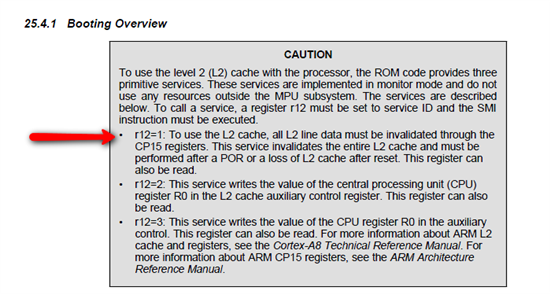I am enabling I/D cache and using them quite succesfully on the OMAP with the Cortex A-8. When I attempt to enable the L2 cache I get some kind of abort problem. I flush (invalidate) the cache with v7_flush_dcache_all before I enable the L2 cache. I have also enabled the MMU before I enable the L2 cache. With my RTOS I am running a fixed memory map so I should not need to worry any more about L2 cache once I have my RTOS running. Anybody have any ideas?
-
Ask a related question
What is a related question?A related question is a question created from another question. When the related question is created, it will be automatically linked to the original question.


